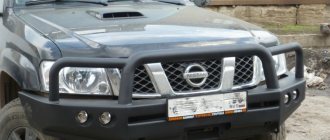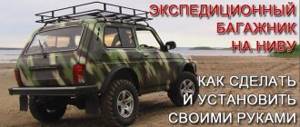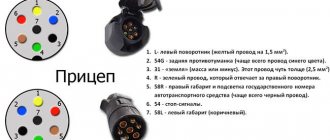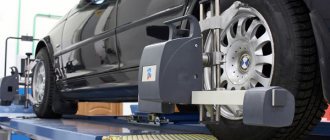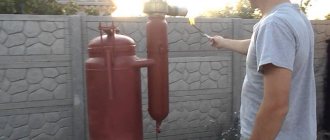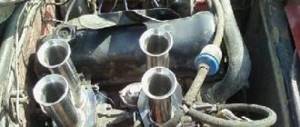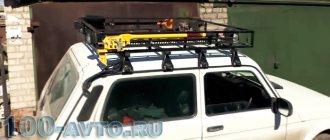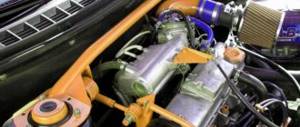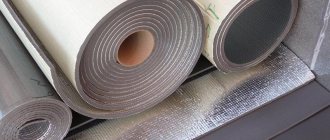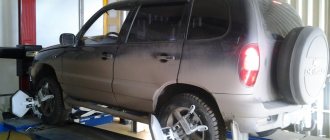Despite the fact that every year more and more new roads are gradually being laid in Russia, there is quite enough off-road in our area. Domestic motorists sometimes have to drive through areas where only an armored personnel carrier can pass. That is why in rough terrain there is a need for appropriate transport. The cheapest and most accessible SUV today is the VAZ 2121 Niva.
But this Russian all-terrain vehicle is also subject to various damages. One of the weak points is the transfer case. In order to protect it, car enthusiasts install a special transfer case subframe on the Niva. Whether it is made with your own hands or not, it doesn’t matter - the result is still the same (the only difference is the monetary costs).
Benefits of use
A device such as a subframe has many advantages, the main one of which, as we have already noted, is the reduction of noise and vibrations in the cabin. In addition, this device is the only protection for the lower part of the transfer case.
By the way, on the conveyor the Niva is already equipped with special fastenings to the floor, which allow mounting supports on the transfer case. Thus, installing a transfer case subframe on a Niva will take the car enthusiast no more than 30 minutes. Another thing is to make this part yourself (in this case, the work can take several days). However, why is the car not initially equipped with such a device? To answer this question, let's consider the main disadvantages of the mentioned device.
Shaking problem
Many drivers who have a VAZ 2121 Niva at their disposal have encountered the fact that the cabin vibrates strongly while driving, especially off-road or at high speed. Vibrations that spread almost throughout the entire cabin cause a lot of inconvenience and constant discomfort. Technically, this was not corrected, so the people’s minds had to independently find a way out of the current situation.
Also interesting: Removing and installing transfer case seals Niva 2121, Niva 2131
The ready-made protective metal frame Niva Comfort is suitable for models 2121, 21213, 21214. The main purpose of the protective part is to eliminate all vibration from the transfer case. But the benefits of installing a subframe on a field turn out to be much greater:
- protection appears for the transfer case when driving off-road;
- the noise level in the cabin is reduced;
- the service life of parts that were previously damaged by excessive vibration increases;
- if you add a few parts, you get excellent protection for the Niva’s crankcase and engine.
After installing the transfer case subframe, the ground clearance will slightly decrease, but the car will be much more comfortable to drive.
Flaws
The main disadvantage of the subframe is the reduction in the vehicle's ground clearance (by several centimeters). But still, this upgrade has virtually no effect on the cross-country ability of the SUV.
Most likely, the absence of the element in question in the car’s factory configuration is explained by complex production technology (special structural steel is used to manufacture this device). However, no matter how many reasons we name, the fact remains: the transfer case subframe is installed on the Niva only through the efforts of the car owners themselves. Even at service stations, not everyone undertakes their manufacture or installation.
Installation of subframe step by step video
Video 2 off-road rides
To eliminate various vibrations and noise in a Niva Chevrolet car, it is possible to install a subframe. The subframe reduces the force transmitted from the transfer case to the car body. Mounting the transfer case minimizes angular vibrations in the longitudinal-vertical plane of the body. The subframe shifts the path through which vibrations and noise travel into the body. The so-called monolithic frame makes it possible to further increase the adjustment along the axes and significantly relieves the load on the floor. The frame is the ideal crankcase protection.
Required Tools
First of all, prepare a large and small grinder (angle grinder), a drill (preferably not a battery-powered one), calipers, a roller, a hammer, a ruler, as well as protective equipment to prevent hot metal shavings from getting into your eyes while working with a grinder. All work should be carried out according to a certain scheme (you can see a drawing of the Niva 2121 transfer case subframe in the photo below).
So where to start? First you need to measure and process the base edge of the channel. After this, use a ruler to measure the required distances from it. Windows in the device must be cut out with a small and large grinder in the transverse and longitudinal direction, respectively. The length of the cut should not extend beyond 8 millimeters from the edge of the top flange of the structure. After the windows are cut out, the contours of the sidewalls should be processed and chamfered.
The angle of fastening to the spar and cross member of the device may have a free size, but it should not be less than the length of the mounting holes and the distance between them. If corners are not available, you can use a different scheme for fastening the part to the spar. It is important to maintain the height of the transfer case attachment to the subframe.
If this is a reinforced subframe, then metal corners are additionally welded under the mounting points of the box brackets. The latter are connected to the side parts of the channel. The oblong shaped holes go like a bolted connection.
Preparation.
1. After the initial preparation of the elements, finishing processing and connection into a single structure is carried out: 1. In the channel, in accordance with the diagram, rectangular windows are cut out, ending no closer than 0.8 cm to the edge of the edge. Bevels (chamfers) are eliminated;
Also interesting: Chevrolet Niva gearbox diagram video
2. In corners measuring 70x50 or 70x70, holes are made for bolted connections, after which they are tacked by welding.
3. Corners of 35x35 cm are fixed to the lower edge of the channel, to which sheets are welded to protect against impacts and dirt. In the latter, for the purpose of access to the drain plug and regular cleaning, service holes are cut out.3. Corners of 35x35 cm are fixed to the lower edge of the channel, to which sheets are welded to protect against impacts and dirt. In the latter, service holes are cut out in order to gain access to the drain plug and regular cleaning.
We install transfer case subframes on the Niva Comfort SUV: where is the protection attached?
It is mounted on the corners at the bottom of the device. As for the type of connection, it, similar to the two options listed above, is bolted. However, the holes in the body of the side parts of the device and the lower part of the corners are made according to the threaded principle. The protective sheet is part of the load-bearing structure, which forms a kind of box and gives the subframe greater strength. Accordingly, the box will be less vulnerable to various mechanical damage, which will have a positive effect on the Niva’s cross-country ability.
Additional holes
An additional window is cut under the drain plug to drain the oil. You can drill holes in any place convenient for you, without bothering with the accuracy of the markings. Car enthusiasts also make technological windows to drain the water formed between the sidewalls of the channel and the dirt that gets there. The protection is enhanced by corners that are attached to the box support and the frontal part of the entire device. This design will protect the transfer case from all kinds of impacts on stumps, ditches and other obstacles that can lead to deformation of the subframe.
How can you improve your device for extreme driving?
In this case, you can change the profile of the sidewalls of the device, which will make it flatter and more durable. The corners are welded not only to the transfer case brackets, but also to the side shelves of the channel. They are also attached inside the last element. At the end you should have a frame of four corners. This design makes it possible to cut the sidewalls of the channel to fit the corner flange. As a result, the height of the subframe will be reduced by 50%, and the strength will double.
Subframe drawings for Niva photo
Between the mounting holes, the mounting angles to the cross member and spar can be of free sizes in length and distance. It is necessary to observe the size of the height of the attachment to the subframe, and, by the way, you can use the attachment to the spar of other schemes instead of the corners. You can make two types of dispensers. Basic type and reinforced. In the reinforced version, the ends of the channel are tucked under the fastenings of the transfer case brackets. Also in the reinforced version, the oblong holes for attaching the transfer case brackets are repeated.
The type of connection of the subframe protection is bolted, and is attached at the bottom to the corners. But at the same time, the holes must be threaded in the lower flange of the corners and in the body of the sidewalls of the subframe. To impart strength, sheet protection is used; it forms the part of the structure that forms the box. In order to be able to drain oil, water and trapped dirt, it is necessary to make several holes under the drain plug and between the sidewalls of the channel in any convenient place. To increase protection, it is necessary to attach the corners to the frontal part of the subframe and to the support mount for the box itself. If the subframe is not protected, this may lead to its deformation, as head-on collisions with possible obstacles and tree stumps are possible.
Let's look at a reinforced version of installing a subframe on a Niva on our own. If the structure is flatter and stronger, it will provide greater protection; for this it is necessary to change the profile of the sidewalls of the subframe. At the level of the cutout for the transfer case, just as in the first case, with the corners of the protection fasteners, the corners are welded inside the channel onto the side panels from the outside with the shelf down. As a result of creating the structure, we get a frame of four corners inside the channel. The sidewalls of the channel can be cut to fit the corner flange. With this design, the subframe increases quite significantly, and at the same time the height is reduced by about half.
Important to remember! Do not get confused, the subframe must be installed asymmetrically to the location of the engine and gearbox.
There are already a huge number of reviews about the manufacture of such a stretcher; if you have not yet made such a miracle for yourself, then download the diagrams and create a design!
What dangers can await a motorist while driving?
As practice shows, even such a device as a subframe does not guarantee 100% protection for the transfer case and other components of the car while driving off-road. Therefore, if you often operate the Niva in rural areas, where there is a danger of “picking up” a stump or some other object that is difficult to notice in uncut grass, install the special protection on the subframe that we talked about in the previous paragraph. Then the risk of transfer case deformation will be reduced to zero. If there is no such protection, both the subframe and the box itself will deteriorate.
So, we found out how to make a transfer case subframe for a Niva with our own hands. Whether you need it or not - decide for yourself.
Installing crankcase protection on Niva 21214
Even a car enthusiast with minimal knowledge of the mechanics and structure of a car can install a protective plate. The only requirement is the presence of an inspection hole or a lift. Even taking into account the high ground clearance of the Niva, it is extremely difficult to install protection “from the floor”.
When choosing a new protection, it is important to know exactly the year of manufacture and engine size. This is necessary so that the attachment points match. After purchase, the entire process takes a minimum of time:
- After placing the car on a pit or lift, it is better to wash the bottom and engine and wait until it dries.
- Remove the standard part, if it was included in the package.
- Carry out control measurements to check for contact between the standard fasteners and the new part.
- If everything matches, first the protection is placed on the engine immediately behind the bumper (fixation points and their number depend on the car model and the plate itself). Afterwards, if there are two parts, the “armor” of the bottom and gearbox is installed.
- All fastenings and quality of fit of the new part are checked.
Read more: Tools for car repair
As you can see, there shouldn’t be any problems if the parts were selected exactly according to the Niva model. Installation can be easily done by one person.

